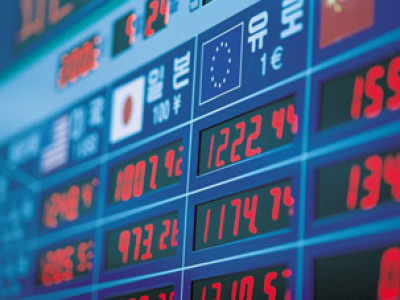India Economic and Financial Outlook for 2016
India’s economy proved resilient in 2015, despite a weak global economy and underlying volatility in neighbouring China. The Chinese central bank’s shock devaluation of the yuan, its national currency, in August 2015 made India’s stock market a sort of safe haven for investors fleeing the ripples and shocks of the resulting crisis. Against this backdrop, India’s economy is expected to remain strong in 2016, providing a sense of calm in an otherwise volatile marketplace.
India’s Economy
Based on preliminary estimates, India’s economy likely grew around 7.3% in 2015, matching the previous year’s robust growth rate. Growth in the world’s seventh-largest economy is forecast to gain even more momentum in 2016, reaching 7.5%. By comparison, China’s economic growth is forecast to slow to 6.3% in 2016 from around 6.8% in 2015. In fact, India’s growth rate is forecast to eclipse emerging markets and developing nations as a whole.
According to the International Monetary Fund (IMF) India’s economy in 2016 will “benefit from recent policy reforms, a consequent pickup in investment, and lower commodity prices.”
Monetary Policy
The Reserve Bank of India (RBI) slashed its repo rate by 125 basis points in 2015 in order to counteract low inflation and safeguard the domestic economy against external volatility. The repo rate stood at 6.75% at the end of 2015.
According to analysts, the RBI may cut interest rates by another 50 basis points in 2016 should wholesale and CPI-based retail inflation turn lower after spiking toward the end of the 2015. India’s inflation rate climbed from a low of 3.69% in July to a 2015 high of 5.41% in December, stemming largely from a worrying increase in food inflation. Despite this sharp rise, it’s important to bear in mind that the country’s inflation rate averaged 8% from 2012 to 2015 before plunging to a record low of 3.69%.
The recent volatility in Indian inflation could make it challenging to forecast what 2016 will bring in terms of central bank policy. The RBI recently cut its short-term inflation outlook, which could play a crucial role in future policy decisions.
Financial Markets
2015 was a turbulent year for India’s financial markets, as a string of weak corporate earnings, plunging commodity prices and surprise rate cuts weighed on domestic stocks. The S&P BSE Sensex Index, a free-float stock market index of 30 large companies listed on the Bombay Stock Exchange, ended 5% lower for the year. The S&P’s Nifty 50 Index, which is a composite of the 50 largest and most liquid stocks on India’s National Stock Exchange, also fell 4%. Perhaps more startling was how far corporate earnings deviated from the consensus. Indian companies reported flat-to-negative earnings for the year, contrasting sharply to 20% growth forecast by the consensus.
Despite underlying volatility, small and midcap stocks had a robust year, outperforming the benchmark index by a large margin. The S&P Mid-cap index climbed around 7% for the year, closing just shy of its peak level in August.
India’s stocks are expected to gain momentum in 2016, picking up where they left off in 2014 – a year that saw a massive gain of 30%.
Rohit Gadia, founder and CEO of Indian-based CapitalVia Global Research, summarizes what could be in-store for Indian markets in the year ahead:
“As overall marco economic data are improving, reform initiatives being taken by the government, outlook of markets in next year will certainly be much better as compared to current scenario as from second half of FY16 companies should post better quarter results and we expect market to be favourable for investors to earn returns of around 20-25%.”
In fact, equity analysts expected the rebound in India’s benchmark stock index to occur much earlier. A Reuters poll back in June 2015 suggested that the BSE Index would climb around 18% in the next 12 months.
Conclusion
Heading into 2016, India’s growth prospects remain favourable. The decline in the current account deficit has lowered the country’s external risks, while lower than normal inflation has created space for more accommodative monetary policy. As an emerging economy, India will greatly benefit from structural reforms in key industries such as energy and mining. This will ensure that India’s economy remains robust over the medium-term.
In the short-term, however, India is expected to lead the charge for developing nations. This is especially important given the end of runaway growth in China.
The post India Economic and Financial Outlook for 2016 appeared first on Forex.Info.








